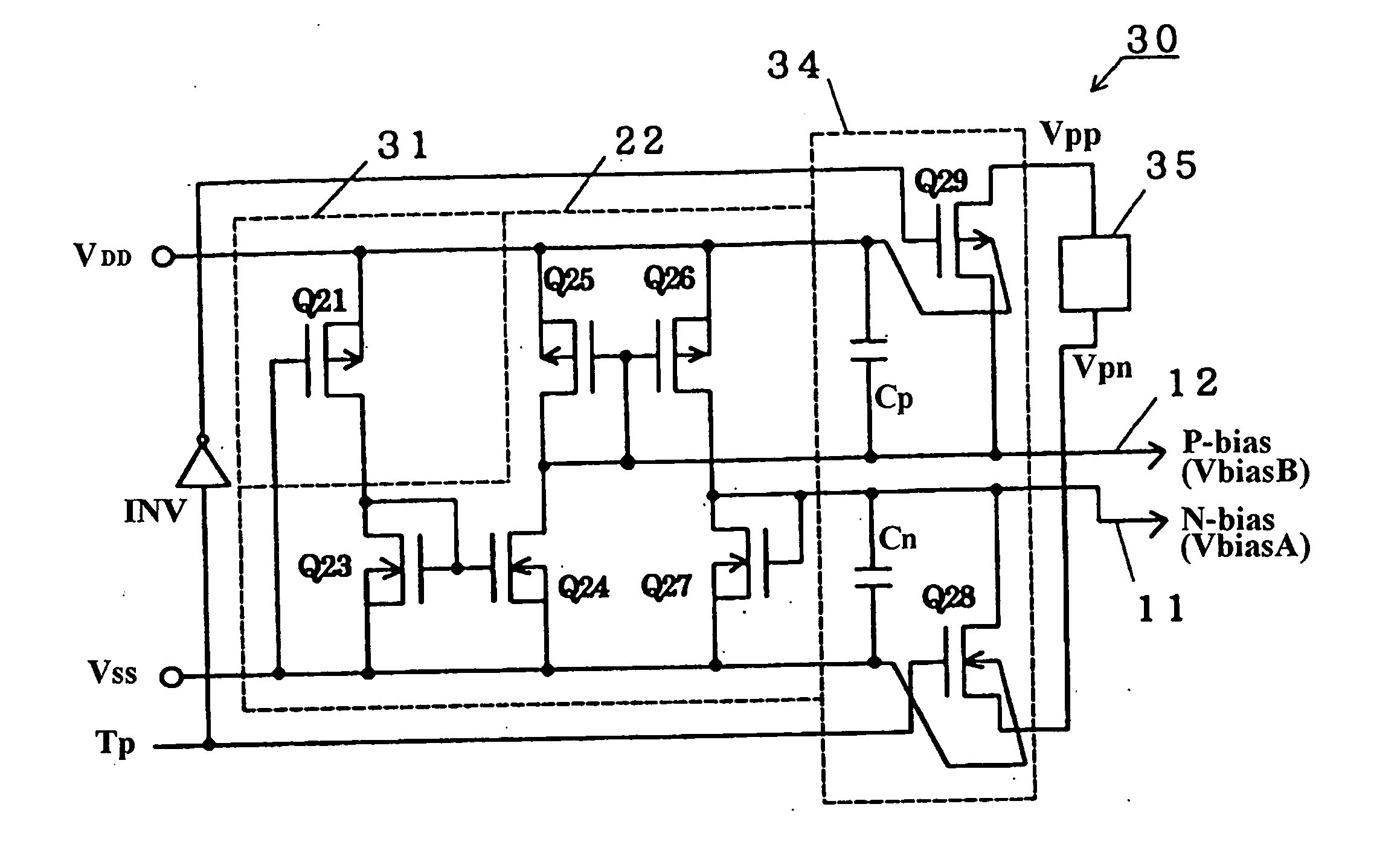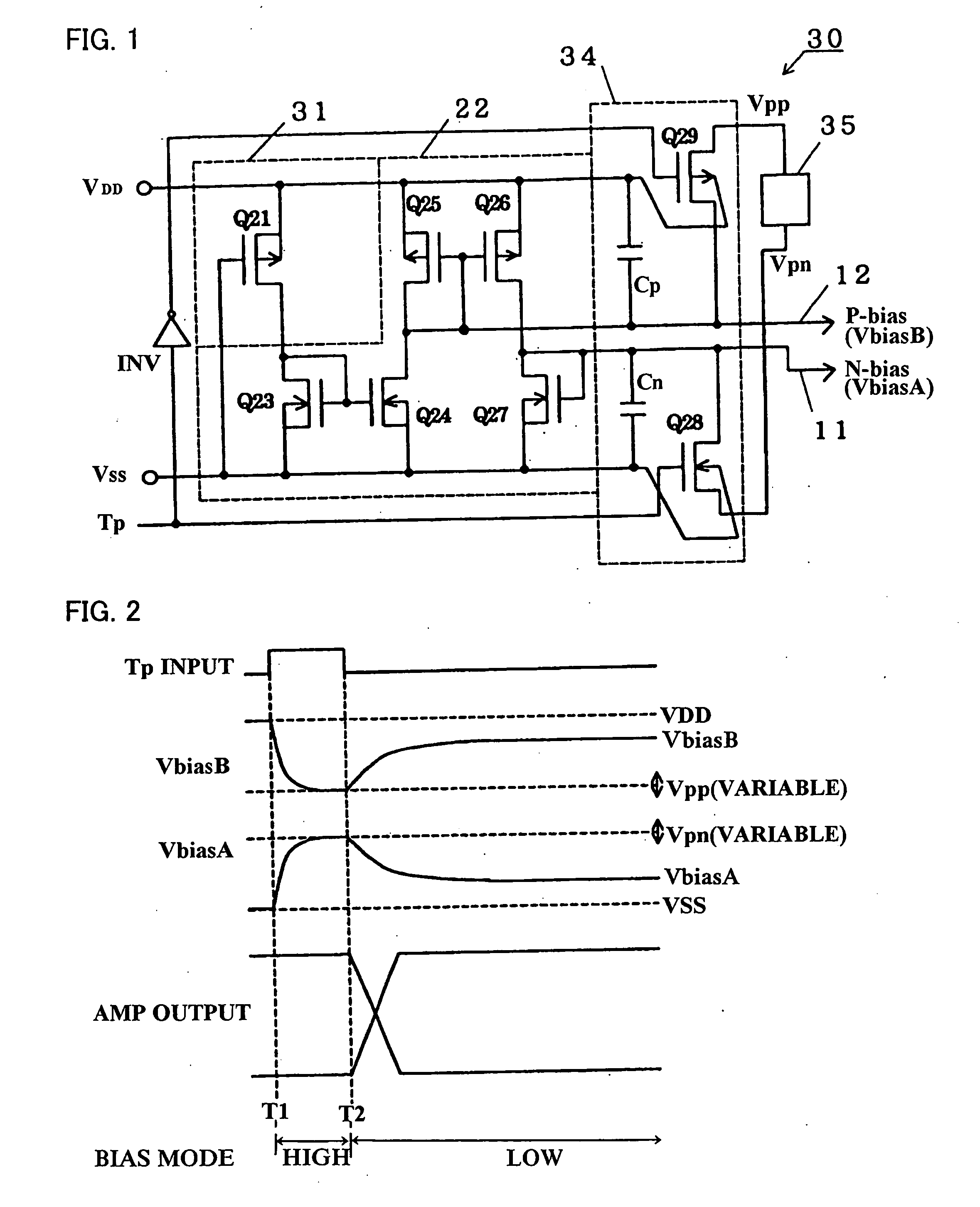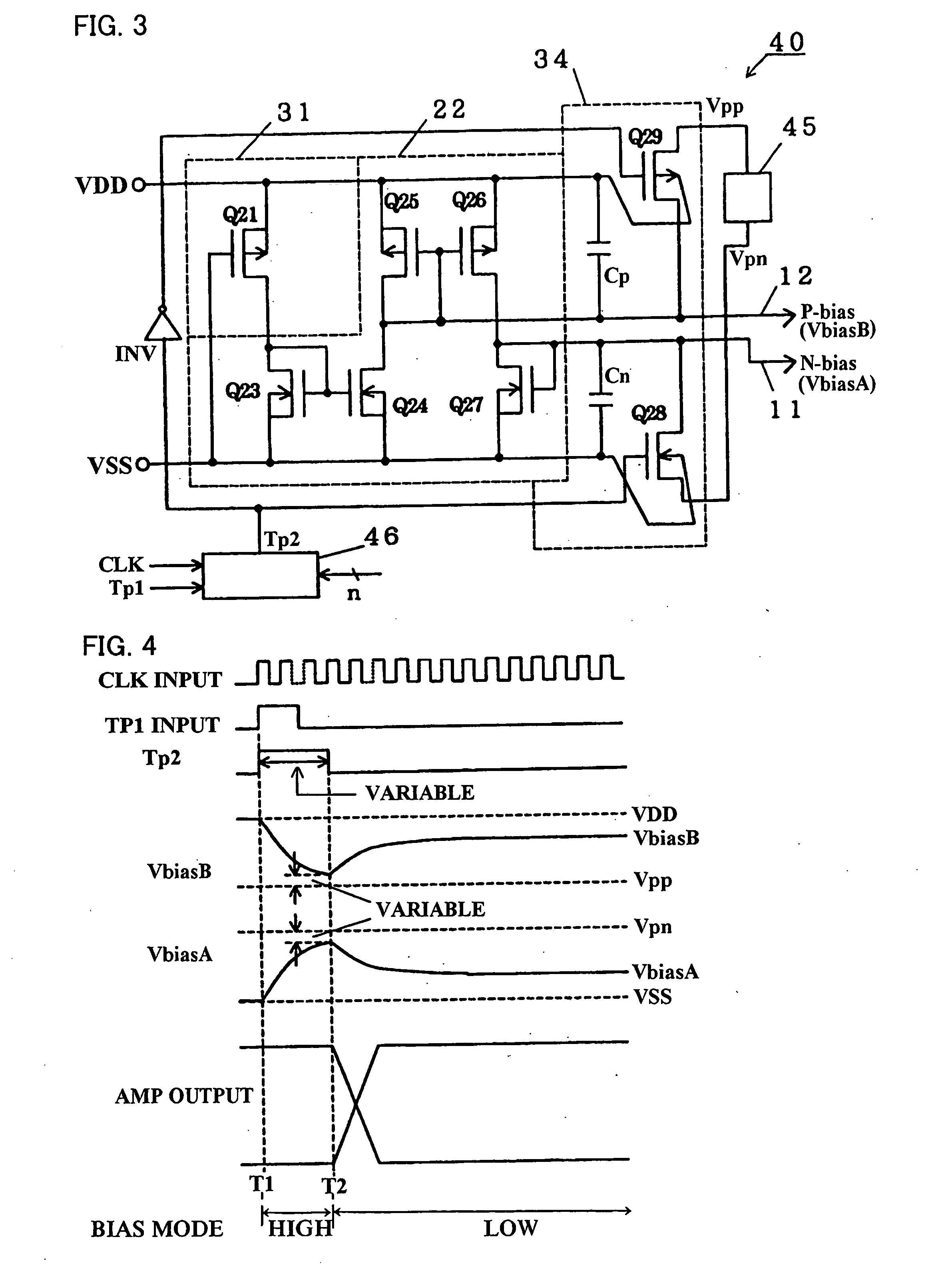Output circuit
a technology of output circuit and output waveform, which is applied in the field of output circuit, can solve the problems of low electric current consumption fine control, waveform distortion such as overshooting or undershooting of outputs, and can not be achieved, so as to reduce the electric current consumption of the operational amplifier, smooth output curve, and reduce the distortion of the output waveform of the operational amplifier.
- Summary
- Abstract
- Description
- Claims
- Application Information
AI Technical Summary
Benefits of technology
Problems solved by technology
Method used
Image
Examples
first embodiment
[First Embodiment]
[0053] A bias circuit 30 according to a first embodiment to be used as a bias circuit 10 for output circuits 101 and 102 shown in FIGS. 7 and 10 will be described below with reference to FIG. 1, as an embodiment of an output circuit of the present invention. Incidentally, by assigning same reference characters to components having basic configurations that are the same as those shown in FIG. 12, their descriptions will be omitted. Its difference from a conventional bias circuit 20 shown in FIG. 12 is the presence of a bias current source 31 in place of a bias current source 21, and addition of a precharge circuit 34 and a precharge power supply 35. The bias current source 31 is different from the bias current source 21 in that an MOS transistor Q22 and an inverter 23 are eliminated therefrom and the bias current source 31 is made up of a MOS transistor Q21 so as to eliminate switching between high and low biases and make the bias current source 31 a bias current so...
second embodiment
[Second Embodiment]
[0060] Next, a bias circuit 40 according to a second embodiment will be described with reference to FIG. 3. In FIG. 3, by assigning same reference characters to components that have same basic configurations as those shown in FIG. 1, their descriptions will be omitted. Its difference from the bias circuit 30 shown in FIG. 1 is the presence of a precharge power supply 45 in place of the precharge power supply 35 and addition of a pulse width adjusting circuit 46. Further, the precharge power supply 45 is different from the precharge power supply 35 in that the precharge power supply 45 is configured to output the precharge voltages Vpn and Vpp of predetermined constant voltages.
[0061] In the pulse width adjusting circuit 46, a desired n-bit count value is set. By counting its count value from rise of a timing signal Tp1 by a clock signal CLK, the pulse width adjusting circuit 46 outputs a timing signal Tp2 of a predetermined pulse width.
[0062] Next, an operation ...
third embodiment
[Third Embodiment]
[0065] Next, a bias circuit 50 according to a third embodiment will be described with reference to FIG. 5. In this embodiment, by assigning reference numerals to the components having basic configurations that are the same as those shown in FIG. 3, their description will be omitted. Its difference from the bias circuit 40 shown in FIG. 3 is the provision of a precharge circuit 54 in place of the precharge circuit 34 and no presence of the pulse width adjusting circuit 46. The precharge circuit 54 is different from the precharge circuit 34 in that the precharging capacitor Cn is connected between the low-voltage side terminal VSS and the series connection node between the MOS transistor Q26 and the MOS transistor Q27 via a variable resistance Rn, and that the precharging capacitor Cp is connected between the high-voltage side terminal VDD and the series connection node between the MOS via Q24 and the MOS transistor A25 via a variable resistance Rp.
[0066] When the b...
PUM
| Property | Measurement | Unit |
|---|---|---|
| precharge voltage | aaaaa | aaaaa |
| voltage | aaaaa | aaaaa |
| pulse width | aaaaa | aaaaa |
Abstract
Description
Claims
Application Information
 Login to View More
Login to View More - R&D
- Intellectual Property
- Life Sciences
- Materials
- Tech Scout
- Unparalleled Data Quality
- Higher Quality Content
- 60% Fewer Hallucinations
Browse by: Latest US Patents, China's latest patents, Technical Efficacy Thesaurus, Application Domain, Technology Topic, Popular Technical Reports.
© 2025 PatSnap. All rights reserved.Legal|Privacy policy|Modern Slavery Act Transparency Statement|Sitemap|About US| Contact US: help@patsnap.com



